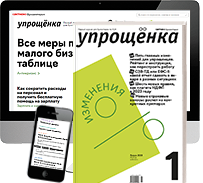
x64 | File Size: 213 MB
Description:
Autodesk Inventor Cam Ultimate powerful products company capable of Autodesk, a solution integrated software in the field of CAD / CAM in the field of mechanical parts in the form of a plug-in software Inventor also delivers all the capabilities of modeling and simulation program, designers, engineers and CNC programmers helps to put their projects directly and more quickly turn to car parts.Autodesk Inventor HSM Ultimate changed too inventor CAM.
Using Autodesk Inventor Cam Ultimate all the advantages of toolpath (cut) models 2.5D, 3D, 3 + 2, and 5-axis to achieve better performance at your fingertips. HSM stands for High Speed ​​Machining means high-speed machining. Currently this application because Nqssh performance in various industries including automotive, mold design, design of industrial parts and more widely used.
Features and Inventor CAM:
-All features of the software Inventor
-5-axis and multi-axis operation
-toolpath three-dimensional, curved and diagonal
-The possibility of finding the best cut routes
-Read, write and convert data from GIS, CAD to high range of formats
-Toolpath simulation with various methods
-Take advantage of the various types of CNC code specific functions and the ability to compare them with each other
-Advanced analytical tools such as size and distance calculations, physical details and estimated time of machining
-Support for 3-axis milling and positioning 2 + 3
-Improve productivity with support from old ways
System Requirements:
-Autodesk Inventor CAM 2020 supports Microsoft Windows 7 64-bit and Windows 10 64-bit.
-Inventor CAM 2020 is compatible with the 2017, 2018, 2019 and 2020 versions of Inventor, Inventor Professional, and Inventor LT.Whats New:
The following changes have been made in the current update (2020.1):
Patch Updates:
-This is the first update which is being delivered as a patch rather than a full installer, which will minimize download and install time. The same patch can be applied for both Premium and Ultimate installations.
Milling Toolpaths:
-Fixed an issue where 3D Adaptive Clearing with rest machining can fail with complex remaining stock.
-Fixed several issues in which the toolpath computations for Adaptive Clearing could fail on Mac.
-Improved Adaptive for tighter model contours; it now finds a starting point on the stock boundary.
-Improved start entries for Adaptive Clearing toolpaths so that the toolpath starts in corners/endpoints rather than in the middle of a stock line.
-Fixed an issue where calculating a 2D Adaptive toolpath with rest machining from a face selection could result in a large area being machined.
-Fixed an issue in Adaptive where using a ballnose cutter as a reference tool was giving the wrong toolpath.
-Removed machine orientation information from the Adaptive toolpath geometry tab.
-Fixed a crash that could occur in some cases after deleting the contour selection associated with a flat pattern.
-Fixed an issue where preserve order was not respected in 2D Profile toolpaths. (#12127)
-Fixed an issue that could occur when creating bore, circular and threading toolpaths around cylindrical bosses.
-Fixed a problem in Contour toolpaths where ramps might not be connected to their cutting moves, resulting in an unexpected lift and plunge to cover the gap.
-Fixed an issue that introduced unnecessary retracts in Ramp operations.
-Fixed an issue which caused irregular cutting passes for Scallop toolpaths.
-Fixed an issue where a Constant Scallop toolpath might not calculate when up/down milling and 'other-way' linking was enabled.
Turning Toolpaths:
-Fixed an issue where an angled turning tool was incorrectly previewed in the tool library.
-Fixed a problem in turning profile roughing operations with turning mode set to face profiling where the toolpath was not regenerated after the direction parameter in the operation was changed.
-Added an option for a turn parting operation to keep the parting tool down at the final toolpath point X coordinate or retract it to the clearance X coordinate.
-Fixed an issue for turning face and chamfer operations with a turning or grooving tool. For certain combinations of the spindle direction and handedness of the holder, the Safe Z coordinate was based upon the wrong side of the insert.
-Fixed an issue where a grooving operation could fail if the back and front Z limits coincided with the extents of the groove geometry.
-Fixed a memory leak for some turning grooving jobs.
Tool Library:
-Fixed turning tool preview in the tool library when the spindle rotation was changed.
-Fixed a problem with the visualization of a round shank external grooving tool in simulation.
User Interface:
-Fixed a problem in which an error message about "invalid machine configuration" was incorrectly displayed.
-Fixed a problem where retracting z levels were machine areas that had already been cleared in lower levels.
-Fixed a problem in which stock properties defaulted to selection of faces, and required selecting some face and clearing it before you could select the actual stock.
-Fixed a crash that could occur when using drag-and-drop to import a tool library from Windows Explorer into the tool library window.
-Fixed a crash that could occur during simulation if a toolpath removed nearly all of the stock.
-Fixed a problem in certain operation dialogs that caused incorrect display of group parameters if the group was re-displayed due to a change to another parameter.
-Fixed a problem that occurred when creating operations from a template containing a Manual NC operation. No tool will be assigned to the Manual NC.
Post Processor:
-Fixed an issue in which NC code was not correctly saved to the specified output file.
-Fixed an issue in which the output directory could not be renamed or deleted after posting.
-Functionality has been restored to the alert, promptKey, and promptKey2 API calls. These now work as before, but are supported only on Windows.
-Fixed a regression where tool.getExtent() could return an empty bounding box, causing the setup sheet to incorrectly scale the tool image.
-Added a mechanism to define which rotary axes support TCP in the post processor. This simplifies the code needed to disable TCP for a single axis.
-Added new global function 'isNewWorkPlane(section)' which returns true if the passed section requires new workplane calls. This simplifies the 'newWorkPlane' checks that are typically done inside of post processors
-Added global variables 'minimumProgramNumber' and 'maximumProgramNumber' to post processor.
-Post properties that you set when using a post processor are now saved to a file. This allows using the post processor on other computers with confidence that the previously used properties will continue to be applied.
-Added the onManualNC function that will handle all Manual NC commands, and the expandManualNC function that handles all Manual NC commands using the historical method.
-Fixed the behavior of mapToWCS, so that it can be changed multiple times in the post.
-Added cancelRotation and cancelTranslation methods.
NC Editor:
-Updated HSMEdit to fix an issue in which the display of text was corrupted.
-Updated HSMEdit to correct a problem with the backDescriptionting function.
Licensing:
-Fixed a problem that could occur when activating Inventor CAM with an HSM Ultimate network license.
-Fixed an issue in which administrator privileges were required when activating a license.
Homepage
У вас нет разрешения на просмотр ссылки, пожалуйста Вход или Регистрация









